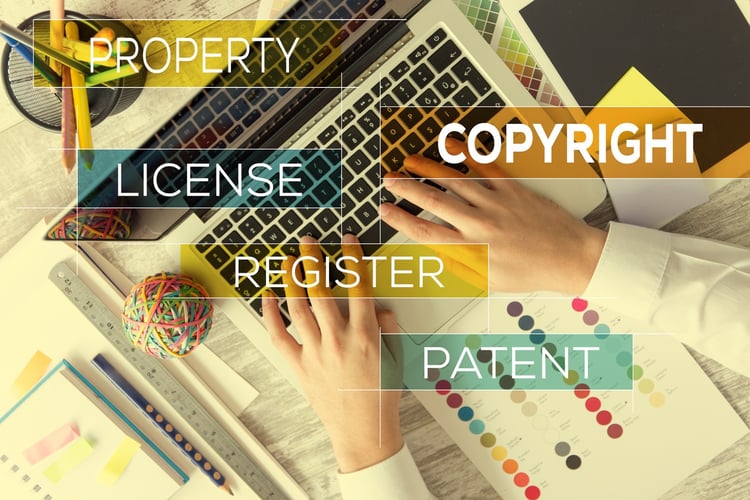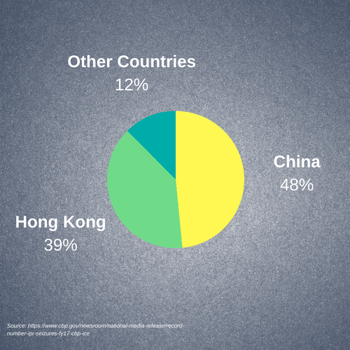First of all, you don't want to be the one caught importing counterfeit or pirated goods. Period. It's a huge industry, and US Customs and Border Protection (CBP), and other developed countries enforcement professionals are cracking down. Heavy fines and even criminal charges can be filed against importers who engage in intellectual property right infringement.

CBP and US Immigration and Customs Enforcement (ICE) have teamed together to protect the safety of American consumers and economy. Illegally importing and distributing counterfeit goods also funds international criminal organizations and activities including forced labor, and drug trafficking.
In 2017 CBP and ICE executed a public awareness campaign to help citizens understand the downside to counterfeit and pirated goods, and exposed the risk to public health and safety.
IPR Seizures
Did you know that in fiscal year 2017 (most recent data), that US CBP seized 34,143 shipments for intellectual property rights (IPR) infringement, and were valued at $1.2B if they were authentic, according to US CBP?
eCommerce shipments are a growing concern and carry the same risks as container shipments, but officials report that 90% of seizures last year were through express carrier and international mail.
In FY 2017, 15% of all seizures were in the merchandise category and primarily comprised wearing apparel and accessories.
IPR infringement is a global issue, but China and Hong Kong make up the majority, 48% and 39% respectively.

What constitutes an IPR? Copyright, Trademarks, Trade Secrets, & Patents
While related to IPR, there are several forms of protection that all fall under the general rules of intellectual property rights, and each has its own definitions and guidelines.
Copyrights pertain to the authorship of intellectual works, including published and unpublished, that might encompass literary, dramatic, musical, artistic works. For example, all books, published and unpublished are protected by copyright law. And did you know that this form of protection is grounded in the U.S. Constitution? True.
Trademarks on the other hand involve certain words, names, symbols, sounds, or colors - often this a brand name (think Coca-Cola, or Google). These names and their colors are registered as part of their trademarks.
Trade secrets are a big one, and maybe the most important to some businesses. These are things that are unique to a certain company, and might include a "secret" formula, or R&D information. A famous trade secret often provides a competitive advantage, such as McDonald's Big Mac special sauce.
Patents are a bit more complex, and require submission to the US Patent and Trademark office. Planning to market your product outside of the U.S.? Then you'll need to apply in each country that you want to protect your patent. A typical patent will last for 20 years from the date of application and protects the patent holder from others making, using, offering for sale or selling the invention or importing it into the United States.
Protecting Intellectual Property
- Intellectual property is a main driver of innovation, it allows people and businesses to protect their ideas and share them with the world. Inventions would cease to exist if ideas and inventions were not protected.
- Many countries agree that intellectual property is a right given to individuals and businesses to protect the innovations, creative works, ideas, and proper compensation for its citizens.
- Each country handles IPR differently, so you'll want to take the necessary precautions to ensure you are in compliance, and are protected overseas as well. You would need to file for protection within each country where you are doing business.
- International protection can have its costs, so determine whether or not this will apply to you. Conducting a cost benefit analysis will help guide you, as well as discussing your options with a lawyer.
- Another step you can take to safeguard against infringement is to apply language to your contracts with suppliers and distributors, as well as how to settle a dispute. Taking this step will help you communicate and protect your IP.
Enforcement of IPR
Once you've established your patent, registered trademark, or copyright, it's best to register your information with CBP. By doing this, you will help CBP identify illegitimate goods, seize, and destroy counterfeit items entering the US that are infringing on your IP.
If you'll be conducting business overseas, then you will need to follow the proper steps to take protective action for your goods with the appropriate officials.
Taking action to preserve your brand and commodity within the US and other countries, where applicable, will help to fight against stolen IP, reduce the number of counterfeit goods, and enforce the rights given to inventors and creators.
You have the right and obligation to report when you believe your intellectual property has been transgressed. If it's related to imports and exports, then CBP provides you with an online system named e-Allegations where you can submit your claim.
Now that we know how to protect our own brands and aide CBP and ICE in enforcing IPR. We should also take a look at how to avoid buying imitation merchandise. As importers and consumers knowing red flags and signals will assist you in easily identifying fake products.
Avoid buying Counterfeit Goods
It happens all the time, often, people don't even know that the goods they are buying are counterfeit or pirated, and it's not illegal for a consumer to knowingly purchase a counterfeit item. It is unsafe though, and as mentioned earlier, it aids and funds criminal groups and activities.
What are the telltale signs of counterfeit?
- Incredibly reduced price.
- Quality of packaging.
- Where they are being sold - brand name store? Street vendor?
- Know and research the seller if the product you are purchasing is not from a specific store.
- Watch for fake reviews - lots of positive reviews in a short time period? They are likely fake reviews.
- Know your logistics. How long is the shipping time? Where is it coming from?
- Other red flags might include: typos, packaging issues, and tags.
Intellectual Property Rights infringement encompasses the piracy and counterfeit of goods and services of creators and inventors that are then stolen and replicated with unsafe materials or ingredients and sold as an original. This can be harmful to the consumer and the property rights holder. Stopfakes.gov explains that it is the responsibility of the rights holder to report infringement cases. Taking steps to protect your IP through trademarks, copyrights, and patents will guard against theft. Knowingly importing or exporting fake goods is illegal, but not for consumers purchasing - knowingly or not. Since it aides in illegal activities and supports and funds all sorts of criminal operations, and can be harmful to your health and well-being, it is best to avoid purchasing these items.



